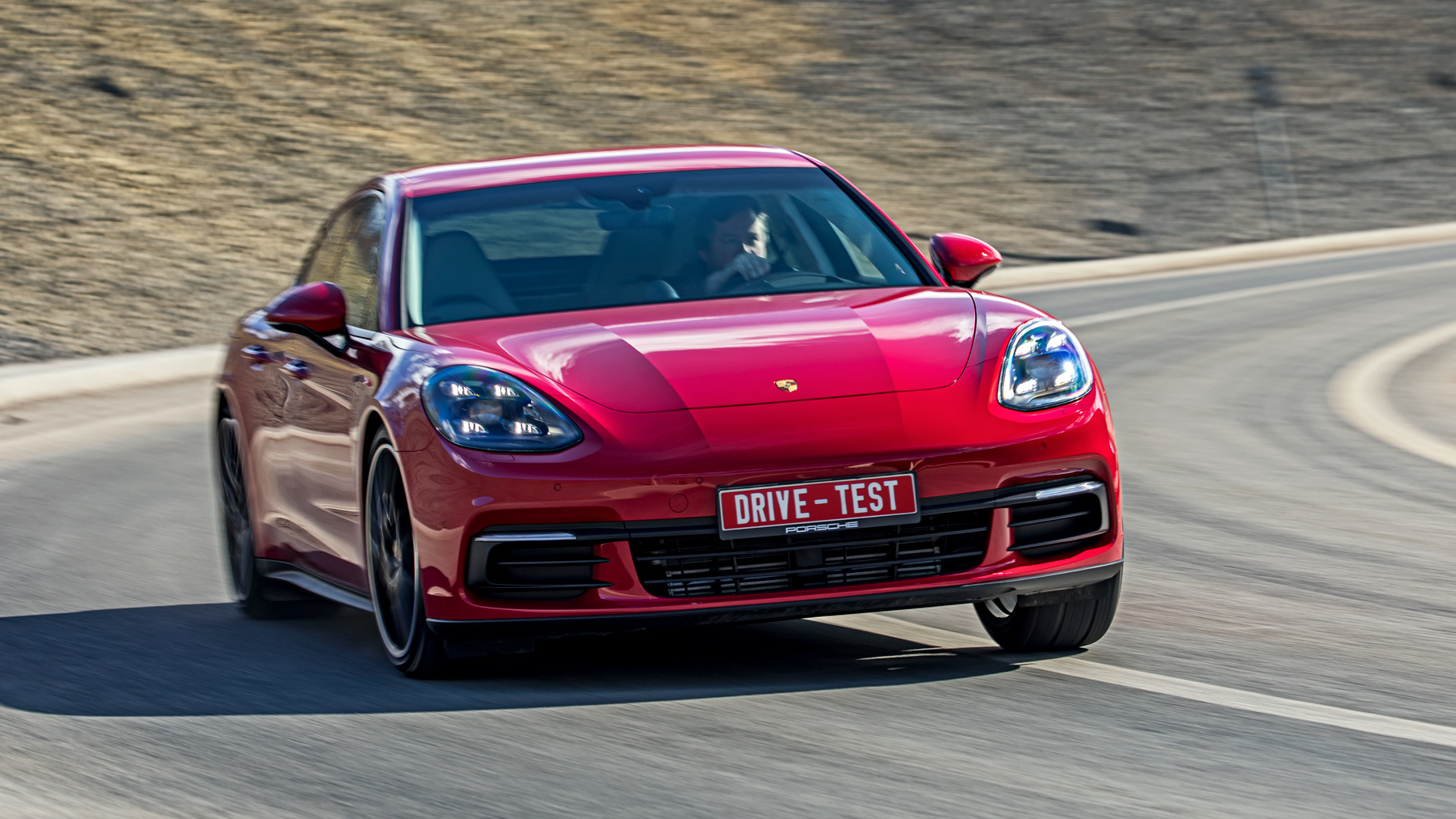The luxury sports sedan segment just got more competitive. With the arrival of the BMW 840i xDrive Gran Coupe, the Porsche Panamera 4 hatchback faces a formidable new rival. These two German powerhouses create an impressive pair, with their 16-foot bodies showcasing athletic silhouettes that command attention. Would you even notice the difference in their body styles without prior knowledge?
These cars share remarkable technical similarities:
- Twin-turbocharged 3.0-liter six-cylinder engines producing 330-340 horsepower
- All-wheel drive systems for superior traction
- 0-60 mph acceleration in approximately five seconds
- Premium price tags that demand serious financial commitment
Standard Equipment and Value Comparison
When it comes to standard features, the BMW takes the lead. Porsche charges extra for items that many buyers consider essential, including the rear-view camera and front seat lumbar support adjustment. Once you match the equipment levels between these two luxury sedans, the Panamera 4 becomes noticeably more expensive. Interestingly, our test Porsche was priced higher despite lacking several BMW standard features like the fully adaptive chassis, active stabilizers, and multi-contour seats. This makes evaluating the base Panamera even more compelling.

Exterior Design: Timeless Elegance vs Bold Expression
Both vehicles embrace a chrome-free aesthetic, yet their design philosophies differ significantly. The Porsche exudes pure classicism with a rich, substantial presence, while the BMW leans toward playful Bavarian boldness. Here’s a useful test for design longevity: imagine how each car will appear in classic automotive magazines 30 years from now. The Panamera fits that vision effortlessly, while the Gran Coupe might require more imagination.
Interior Technology and User Experience
While neither digital cockpit was designed for the ages, the BMW’s interior may show its age sooner. That said, elements like the substantial steering wheel and architectural boldness represent enduring design choices. In everyday use, the 8 Series wins with its more responsive multimedia system, featuring logical controls (including the versatile iDrive controller) and practical features like reverse trajectory guidance. However, the lack of a rear camera cleaning system becomes problematic in winter conditions.
Both cabins feature premium appointments, but each has quirks:
- The BMW’s optional glass controls on the center tunnel feel somewhat out of place
- The Panamera surprises with Volkswagen-sourced steering column switches that feel below its class
- Rear deflectors in the Porsche appear unified with the Golf, feeling unexpectedly budget-conscious
Despite these details, the Porsche cabin feels more spacious and airy. A horizontal design theme across the dashboard enhances the sense of openness, complemented by a higher roofline.
Rear Passenger Comfort and Cargo Capacity
The higher roof also benefits rear-seat passengers significantly. While both cars feature individual rear seats mounted low to the floor, the Panamera offers superior seating and a more comfortable posture. Passengers can slide their feet beneath fully reclined front seats—something the 8 Series doesn’t permit. For cargo duties, the Panamera’s hatchback configuration proves more practical, even offering modest underfloor storage space in the trunk.

Driver Seating and Ergonomics
Entering either car means descending into a low-slung driving position, with seat cushions barely rising above the door sills when fully lowered. Here’s how the front seats compare:
- BMW 840i: Standard multi-way adjustable seats with firm, fixed lateral hip bolsters; electric steering column adjustment included
- Porsche Panamera 4: Base seats that are easier to settle into, featuring excellent grip and a more accommodating profile for long-distance comfort; manual steering column adjustment
Engine Performance and Powertrain Refinement
Starting the Porsche via its rotary ignition key delivers a satisfying, traditional experience—unlike the BMW’s starter button, which gets lost among similar controls on the center console. The Panamera’s base V6 engine exhibits slight idle vibration and produces an aggressive exhaust note even at standstill, with sound deliberately projected rearward where a proper Porsche engine traditionally resides.
Don’t mistake “base” for “slow.” The 3.0-liter V6 producing 450 Nm of torque, paired with the eight-speed PDK dual-clutch transmission, delivers strong performance during spirited driving. However, some refinement issues emerge:
- Slight hesitation from standstill
- Perceptible gear changes during acceleration
- Minor throttle response delays even at highway speeds (60-74 mph)
- Noticeable road noise beginning at 35-50 mph
- Exhaust valve opening adds volume without enriching the sound quality
The BMW powertrain demonstrates superior polish, approaching near-perfection. With an additional 50 Nm from its inline-six engine and a traditional torque-converter automatic transmission, the Gran Coupe launches smoothly and responds eagerly to throttle inputs. The gearbox operates virtually undetected, and the engine remains remarkably quiet—hushed at idle and only slightly audible under full throttle. Even in Sport mode, acoustic refinement remains exceptional.

Chassis Technology and Suspension Setup
The two cars take fundamentally different approaches to chassis engineering:
- BMW 840i Gran Coupe: Standard integral active steering (variable-ratio front steering plus rear-wheel steering), conventional anti-roll bars (active units optional), steel springs with no air suspension alternative
- Porsche Panamera 4: Traditional steering without electronic assistance, optional three-chamber air suspension providing adjustable ride height and damping
Steering Feel and Handling Dynamics
Initial steering response shows minimal difference, with the BMW exhibiting only the slightest hesitation before executing maneuvers with exceptional sharpness. The 8 Series feels more aggressively sporty, with lighter, quicker steering that allows 90-degree turns without repositioning your hands. The Panamera requires more than half a turn of its weightier steering wheel for the same maneuvers.
However, during aggressive driving, the Panamera’s consistency shines. It tracks true without requiring constant steering corrections, while the Gran Coupe demands frequent adjustments through corners. After multiple passes through the same turn during photography sessions, the BMW’s fully active steering system seemed to behave slightly differently each time, making it challenging to anticipate the correct steering input.
Both vehicles wore manufacturer-approved Pirelli Winter Sottozero 3 friction tires. The Porsche’s wider 21-inch rubber allowed corner speeds that made the BMW on 19-inch wheels push toward the outside of the curve. The Gran Coupe tends to drift more readily.

Grip, Balance, and Driving Character
Provoking either car into a slide requires deliberately aggressive steering or throttle inputs. The BMW is playful but somewhat unpredictable, while the Panamera not only offers superior grip but also maintains better balance when the tires do break loose. Despite its more clinical, track-focused character, the Porsche paradoxically feels both more stable and faster.
Ride Quality Across Different Conditions
The Panamera’s ride quality varies significantly with speed. Its three-chamber air suspension delivers velvet-smooth compliance over speed bumps and rough surfaces—but only at speeds below approximately 18 mph, where it clearly outperforms the BMW.
At moderate speeds, the cars reach parity: the Panamera firms up while the spring-suspended Gran Coupe transmits more small vibrations despite rounding off larger impacts. Above 37 mph, the Porsche becomes harsher and louder over road imperfections than the 8 Series.
These observations apply to base suspension modes—Normal for the Panamera and Comfort for the Gran Coupe. Activating Sport or Sport Plus modes in the Porsche proves counterproductive on public roads, just as firming up the BMW’s dampers erases its advantage over the Panamera. Even the Adaptive mode, which doesn’t persist after restart, negatively impacts ride quality. For the BMW, Comfort mode is the only sensible choice.
If scoring ride quality across all surfaces, speeds, and conditions, both cars would earn identical marks. Nevertheless, the Panamera chassis impressed me more overall, primarily due to its precise, predictable, world-class handling dynamics.

Final Verdict: Porsche Panamera 4 vs BMW 840i Gran Coupe
The ideal car would combine the Panamera’s exceptional chassis and practical hatchback body with the 8 Series’ refined powertrain and acoustic isolation. Unfortunately, that hybrid doesn’t exist. Your choice comes down to priorities:
- Choose the Porsche Panamera 4 if you value sporting precision, handling predictability, and timeless design
- Choose the BMW 840i Gran Coupe if you prioritize powertrain refinement and emotional driving engagement—provided you’re comfortable with its less predictable handling character
This is a translation. You can read the original here: https://www.drive.ru/test-drive/bmw/porsche/5e8b47d3ec05c4a3040001cf.html

Published December 29, 2022 • 7m to read





